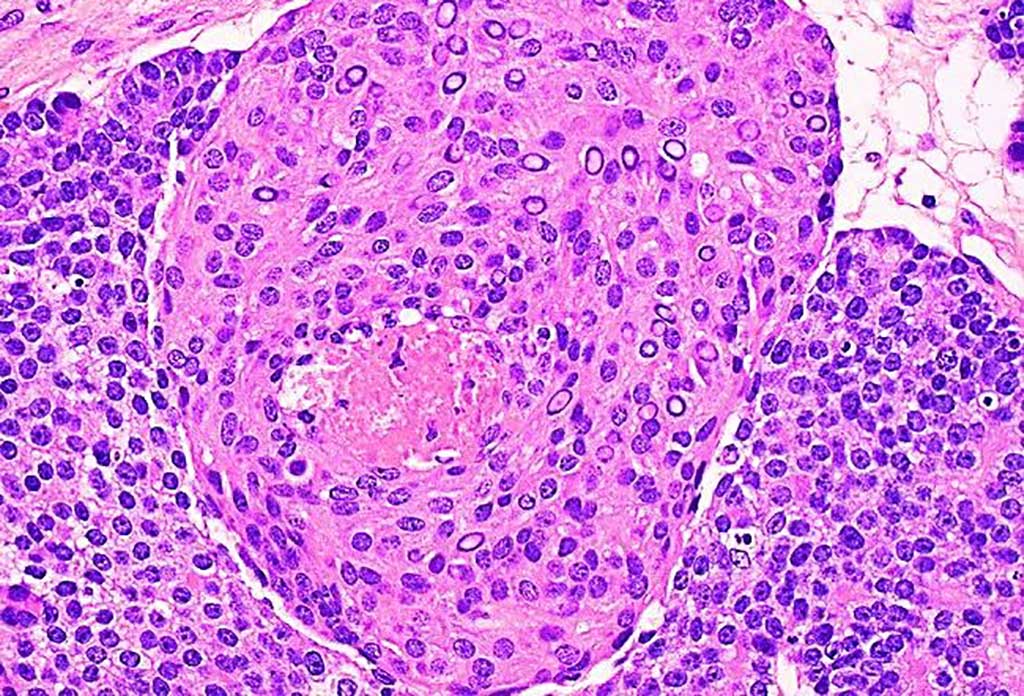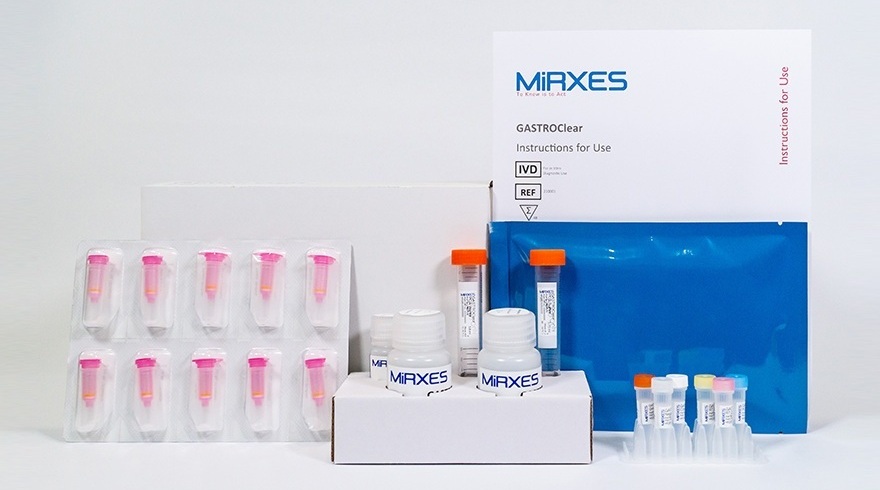Pediatric Pancreatic Cancer Diagnosed from cfDNA Fragments in Urine
By LabMedica International staff writers
Posted on 17 Mar 2021
Although rare, pancreatoblastoma is the most common pancreatic tumor of young children. Carcinoma of acinar cell origin has rarely been reported in older children. Ductal adenocarcinoma and its many variants are the most common pancreatic tumors in adults, but these are exceedingly rare in children. Posted on 17 Mar 2021
Cell-free DNA (cfDNA) in urine is a promising analyte for noninvasive diagnostics. However, urine cfDNA is highly fragmented. Whether characteristics of these fragments reflect underlying genomic architecture is unknown. Compared to cfDNA from healthy individuals, tumor-derived fragmentation patterns ending within recurrently protected regions occurred more frequently in urine.

Image: Histopathology of pancreatoblastoma showing a large squamoid nest surrounded by sheet of bland monomorphic cells. Many of the squamous cell nuclei are optically clear due to accumulation of biotin (Photo courtesy of Dharam Ramnani, MD).
A team of scientists at the Translational Genomics Research Institute (Phoenix, AZ, USA) and their medical colleagues used whole-genome sequencing (WGS) on 30 urine and 15 plasma samples from healthy patients to determine cfDNA fragment size distribution. The group also evaluated urine samples from eight healthy and 22 stages I-IV cancer patients (10 pediatric and 12 pancreatic cancer).
The team reported that size distribution of urine cfDNA fragments showed multiple strong peaks between 40 and 120 base pairs (bp) with a modal size of 81- and sharp 10-bp periodicity, suggesting transient protection from complete degradation. These properties were robust to pre-analytical perturbations, such as at-home collection and delay in processing. Genome-wide sequencing coverage of urine cfDNA fragments revealed recurrently protected regions (RPRs) conserved across individuals, with partial overlap with nucleosome positioning maps inferred from plasma cfDNA. The ends of cfDNA fragments clustered upstream and downstream of RPRs, and nucleotide frequencies of fragment ends indicated enzymatic digestion of urine cfDNA. Compared to plasma, fragmentation patterns in urine cfDNA showed greater correlation with gene expression and chromatin accessibility in epithelial cells of the urinary tract.
To ensure the elevations in fragment-based RPRs were linked to the patients' tumor and not from other physiological responses, the team compared fraction of aberrant fragments (FAFs) in genomic regions with copy number gains and losses in tumor DNA. They saw that the FAFs in urine increased in regions where the patients' tumor DNA carried a copy number gain, even though the copy number changes were below the limit of detection in urine circulating tumor DNA (ctDNA). The team determined that tumor-derived urine cfDNA exhibits a higher FAFs that end within RPRs. By comparing the fraction of aberrant fragments and nucleotide frequencies of fragment ends, they identified urine samples from cancer patients with an area under the curve of 0.89.
Muhammad Murtaza, MBBS, PhD, an associate professor and a senior author of the study, said, “When you look at plasma, on average, you find that the fragment size in closed chromatin regions are slightly longer than the fragment size in open chromatin regions. We found a similar trend for fragment size in urine samples.”
The authors concluded that their results revealed nonrandom genomic positioning of urine cfDNA fragments and suggested that analysis of fragmentation patterns across recurrently protected genomic loci may serve as a cancer diagnostic. The study was published on February 17, 2021 in the journal Science Translational Medicine.
Related Links:
Translational Genomics Research Institute







 Analyzer.jpg)






